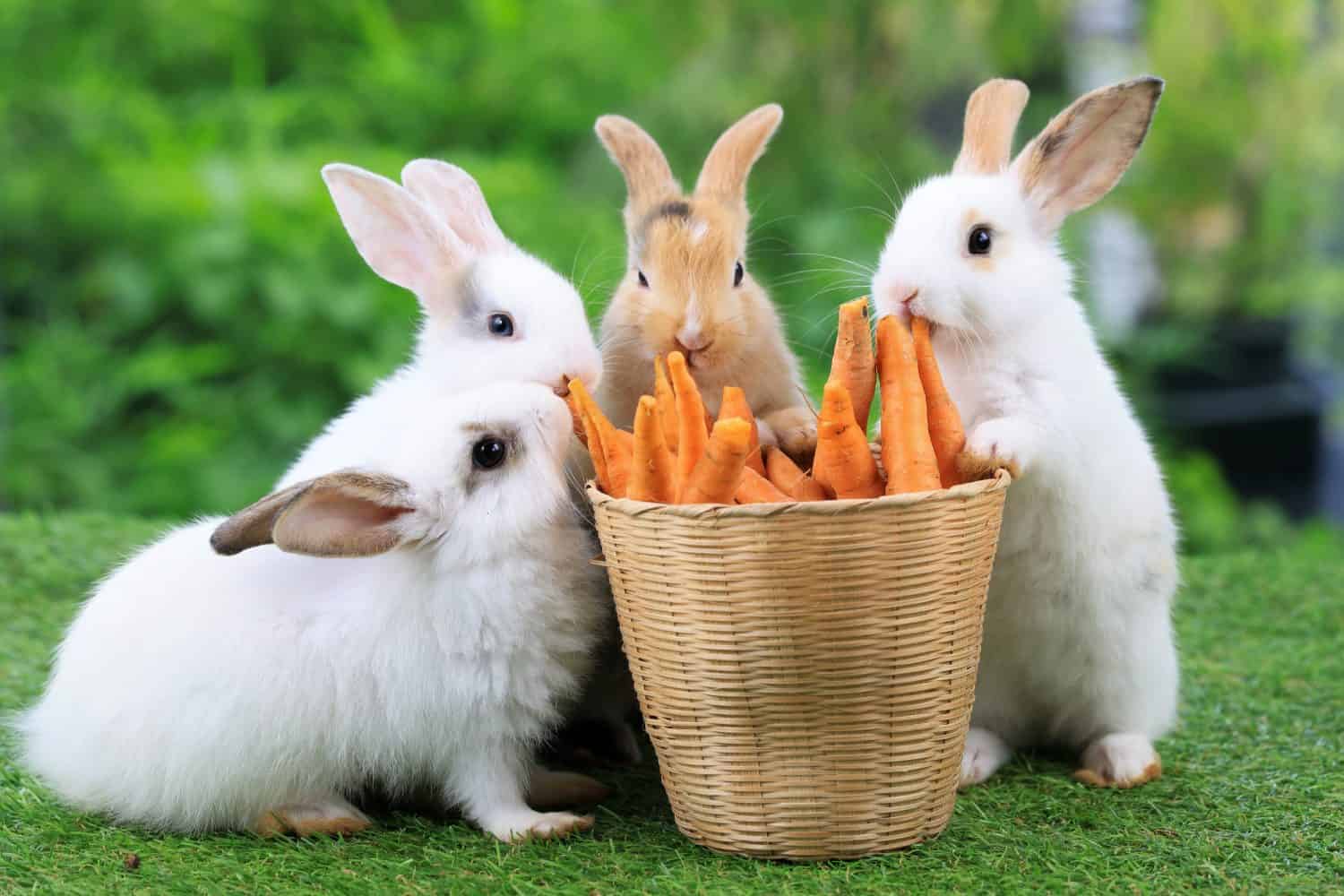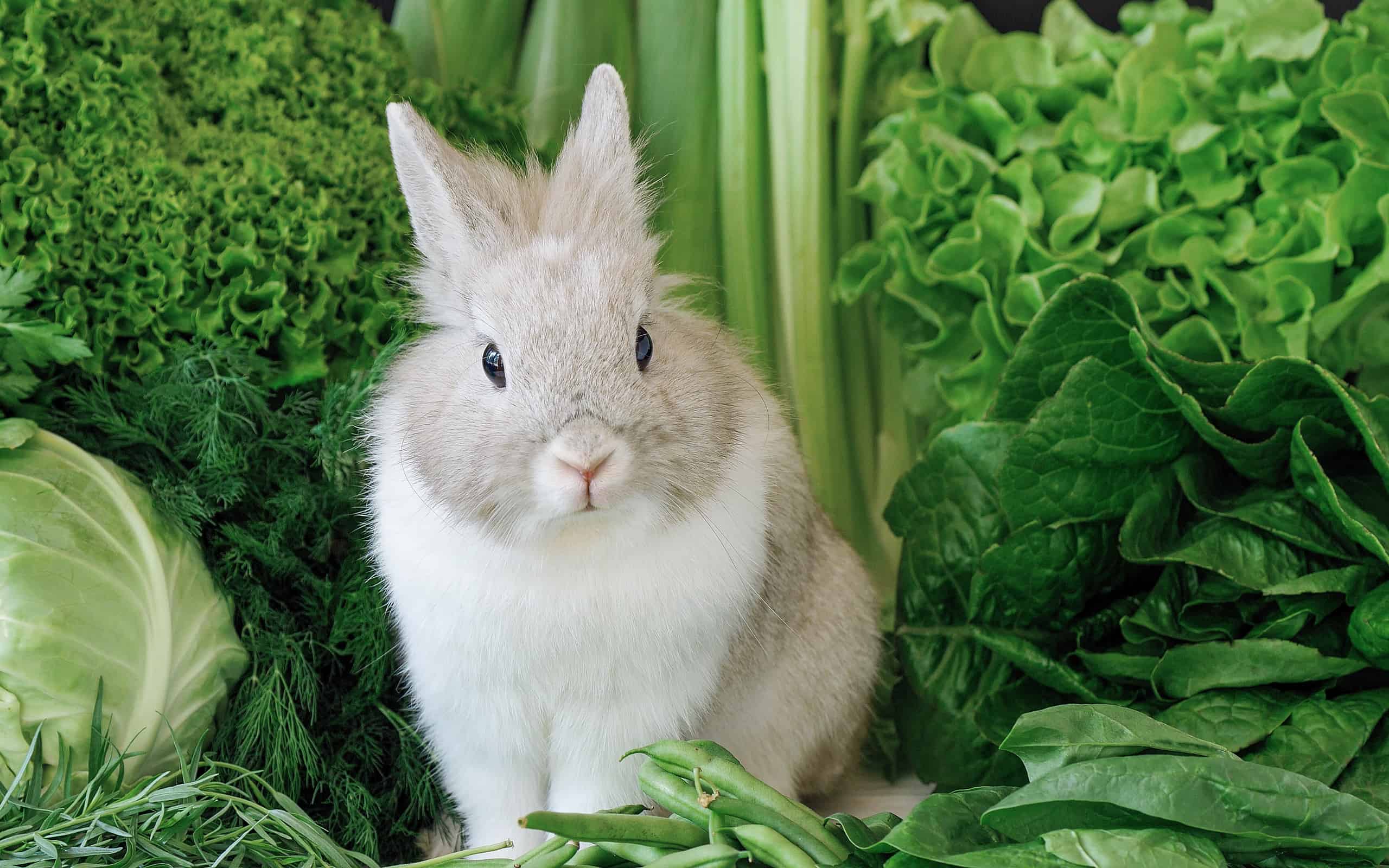Taking care of a rabbit comes with many responsibilities, but nothing sets the tone for their health like the food you give them. A rabbit needs a lot of variety in the food they eat, including an assortment of fruits and vegetables that suit their stomach. Their digestive system isn’t capable of regurgitating something that bothers their stomach, even if it is toxic. Every food you give them – even cabbage – needs to be safe for them.
Cabbage offers a lot of essential nutrients with a high concentration of calcium. However, when they eat too much, they can experience diarrhea and gas, which is very painful for them. Cabbage offers a lot of support for your rabbit, but knowing when and how to serve it makes a big difference. Here are a few tips on giving your rabbit cabbage in their diet.
Tips To Properly Feed Cabbage To Your Rabbit

Introducing cabbage too quickly causes rabbits to experience diarrhea and other digestive difficulties.
©Kviki_Viki/Shutterstock.com
1. Introduce Cabbage To Their Diet At A Slow Pace
When you add cabbage to your rabbit’s food for the first time, take it easy. Cabbage is known for the digestive issues it causes in rabbits when they have too much. Don’t give your rabbit the entire serving at once because they have no way to pace themselves.
Pacing this initial attempt to try cabbage also helps you to see how your rabbit’s digestive system adjusts to the potent vegetable. If their digestive system is unaffected a few days after the introduction, increase the amount of cabbage in the next serving, but continue to establish a gap in the days of consumption.
2. Feed Cabbage To Your Rabbit With Low-Calcium Vegetables
As your rabbit enjoys this vegetable, you need to pair it with vegetables that don’t have much calcium like cucumbers or zucchini. Cabbage already contains a high amount of calcium, which is one of the ingredients that they need daily. However, excessively consuming calcium leads to bladder stones and related problems. It also causes a substantial amount of gas, which is particularly dangerous because rabbits cannot release it. Since cabbage already has enough calcium for one meal, using low-calcium vegetables keeps it balanced.
3. Choose Red Cabbage For Pets With Calcium Issues
If your rabbit already has digestive issues when it comes to cabbage, the safest option for him to eat is red cabbage. Both variations are completely safe, but red cabbages don’t have as much calcium. This is also a good option for rabbits who are new to eating this leafy vegetable. Darker cabbages tend to have the most nutrients.
4. Wash Off Any Chemicals, Pesticides, or Other Contaminants
Like any other crop, farmers treat cabbages and other leafy greens with pesticides during the cultivation process. While there are some regulations for organic produce, there is still residue left behind from natural pollutants. Make sure to wash cabbage or any other fruit or vegetable before giving it to your pet.
5. Always Feed Cabbage To Rabbits In Moderation
No matter how familiar your rabbit becomes with cabbage, make sure to offer cabbage in moderation. Whether they are having it for the first time, or it is a part of their weekend snack, mix it up and make sure to only offer a limited amount. Like humans, rabbits can become heavily involved in their food, and they will not stop eating unless their food runs out or they become full. Since you can’t rely on them to eat the right amount, only serve what they can safely eat in one sitting.
What Are the Best Vegetables For Rabbits?

Romaine lettuce is one of the most nutritious leafy greens for rabbits.
©UNIKYLUCKK/Shutterstock.com
Along with cabbage, many rabbit owners offer their pets an assortment of dark lettuce, carrot tops, basil, watercress, broccoli greens, beet greens, and similar foods. They need up to half a cup of leafy greens daily, but other vegetables should be spread out. Carrots, for example, have too many calories to offer every day, but they are quite healthy.
Foods You Shouldn’t Offer Your Rabbit

With tons of calories, carrots should only be an occasional treat for your rabbit.
©UNIKYLUCKK/Shutterstock.com
Foods like avocados, chocolate, seeds from fruit, raw onions, and iceberg lettuce should never be given to a rabbit. These animals are herbivores, so you also shouldn’t feed them meat. If the rabbit eats any of these foods, you should reach out to your veterinarian as soon as possible.
Thank you for reading! Have some feedback for us? Contact the AZ Animals editorial team.








